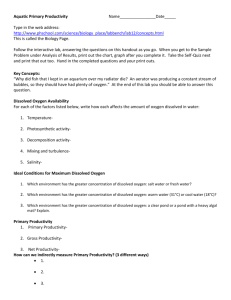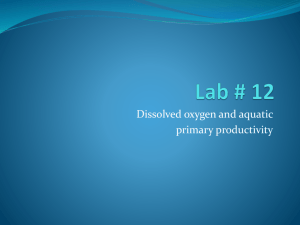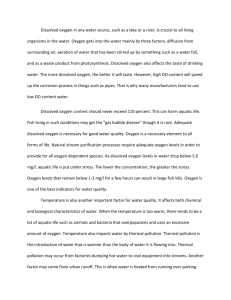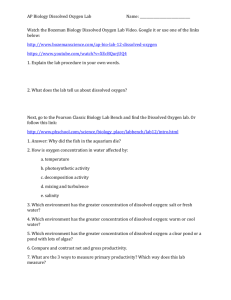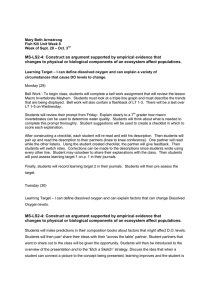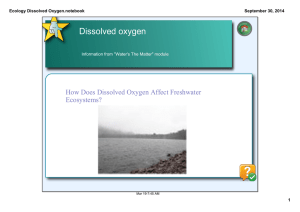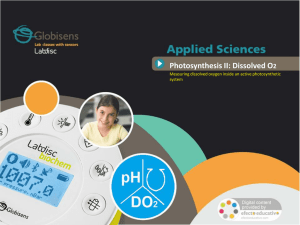Dissolved Oxygen & Primary Productivity Lab Worksheet
advertisement
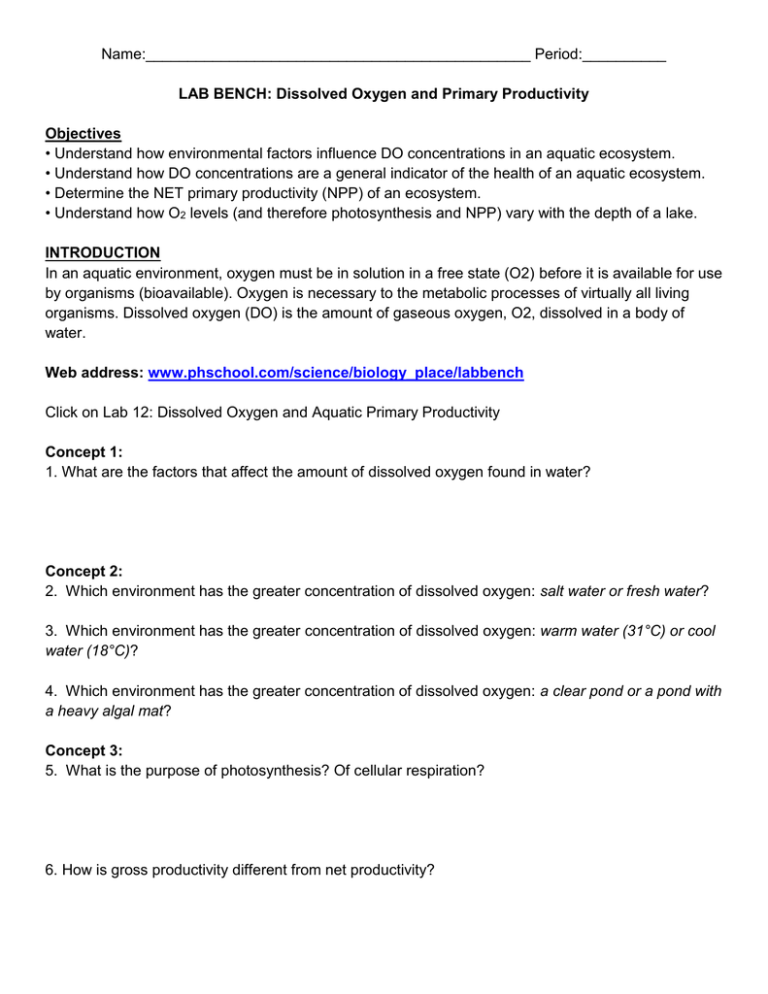
Name:______________________________________________ Period:__________ LAB BENCH: Dissolved Oxygen and Primary Productivity Objectives • Understand how environmental factors influence DO concentrations in an aquatic ecosystem. • Understand how DO concentrations are a general indicator of the health of an aquatic ecosystem. • Determine the NET primary productivity (NPP) of an ecosystem. • Understand how O2 levels (and therefore photosynthesis and NPP) vary with the depth of a lake. INTRODUCTION In an aquatic environment, oxygen must be in solution in a free state (O2) before it is available for use by organisms (bioavailable). Oxygen is necessary to the metabolic processes of virtually all living organisms. Dissolved oxygen (DO) is the amount of gaseous oxygen, O2, dissolved in a body of water. Web address: www.phschool.com/science/biology_place/labbench Click on Lab 12: Dissolved Oxygen and Aquatic Primary Productivity Concept 1: 1. What are the factors that affect the amount of dissolved oxygen found in water? Concept 2: 2. Which environment has the greater concentration of dissolved oxygen: salt water or fresh water? 3. Which environment has the greater concentration of dissolved oxygen: warm water (31°C) or cool water (18°C)? 4. Which environment has the greater concentration of dissolved oxygen: a clear pond or a pond with a heavy algal mat? Concept 3: 5. What is the purpose of photosynthesis? Of cellular respiration? 6. How is gross productivity different from net productivity? Concept 4: 7. What are the three ways that primary productivity can be measured? Which way will be used in this lab? Design of the Experiment: 8. Why do we use dissolved oxygen as a measure of productivity? 9. Does productivity include more than oxygen? 10. Using the nomograph, determine the % oxygen saturation for the following: a. water sample at 10°C that has 7 mg O2/l? _________ b. water sample at 25°C that has 7 mg O2/l?__________ c. water sample at 5°C that has 9 mg O2/l? ___________ 11. Why are the jars wrapped in different amounts of screen? 12. Why is the one jar wrapped in foil? Closer Look: 13. What metabolic process can you interpret the plant is doing from the animation? 14. Why are the dark and light bottles different? 10. Why do we take an initial reading of dissolved oxygen? What purpose does this serve in the experiment? 11. Predict what the hypothesis was for this experiment. 12. Which sample bottle in the experiment is the control? 13. What is the independent variable in this experiment? What is the dependent variable? 14. What additional factors should be kept constant during the experiment? Analysis/Sample Problem: 15. What is the Net productivity for each bottle? 16. How did you find net productivity? Take the Self Quiz: What was your score? _____________ (Don’t cheat!)



